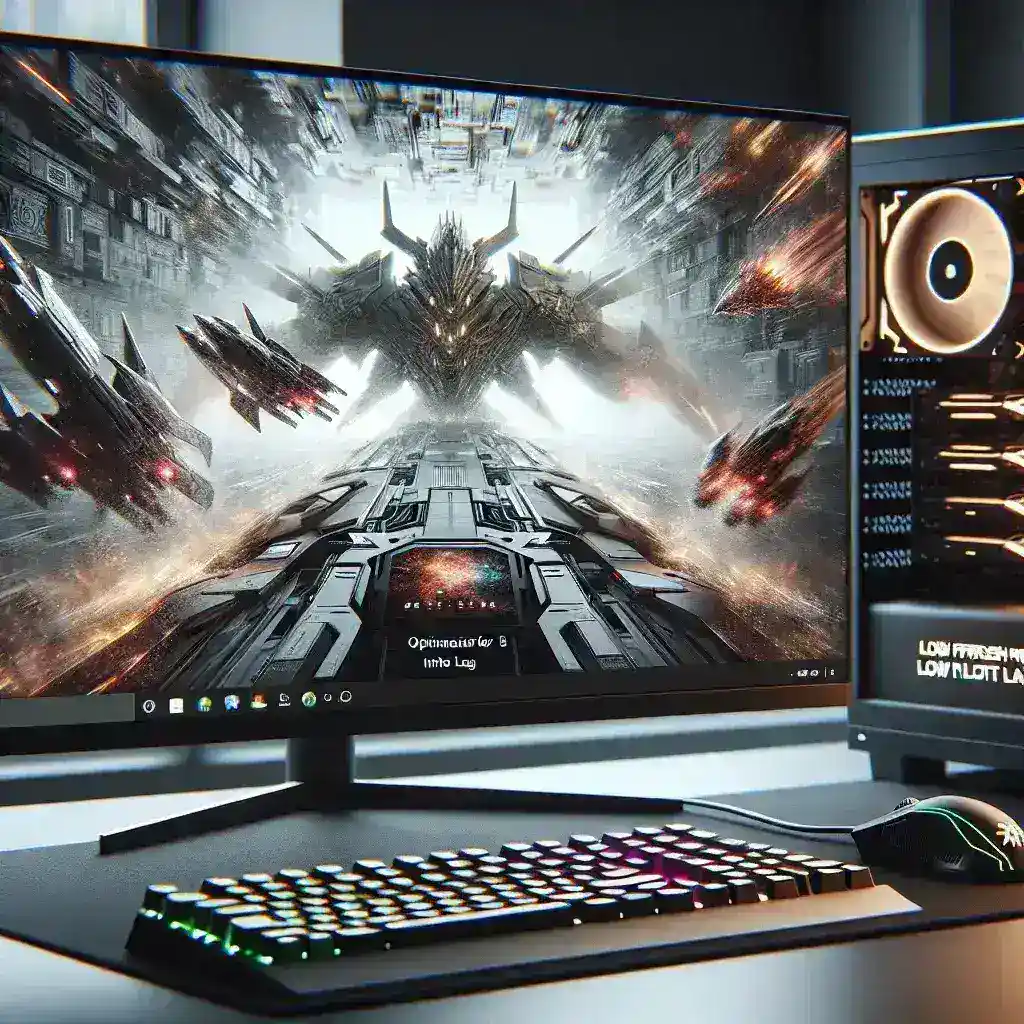In the high-stakes world of competitive gaming, every millisecond counts. Gamers constantly seek to minimize input lag to ensure that their actions are reflected on screen as swiftly as possible. But how exactly do gaming PCs optimize for low input lag? This article dives deep into the various strategies and technologies employed to achieve minimal input lag.
Understanding Input Lag
Input lag is the delay between a player’s input (such as pressing a button or moving a mouse) and the corresponding action occurring on the screen. High input lag can severely impact gameplay, making it crucial for gaming PCs to reduce this delay to as minimal as possible.
Key Strategies for Reducing Input Lag
Gaming PCs employ a multitude of methods to ensure that input lag is kept to a minimum. Let’s explore these in a tabular format for clarity:
| Strategy | Description |
|---|---|
| High Refresh Rate Monitors | High refresh rate monitors (such as 120Hz or 240Hz) refresh more frequently, reducing the delay between screen updates. |
| Low Latency Optimizations | Graphics settings and optimizations in system BIOS/Firmware to reduce latency in graphical rendering. |
| Network Optimization | Using wired connections instead of wireless ones to reduce latency. Also, configuring Quality of Service (QoS) settings in routers. |
| Efficient Cooling Systems | Keeping the system cool to prevent thermal throttling, which can cause delays in response times. |
| Fast Storage Solutions | Using SSDs instead of HDDs to reduce loading times and input lag. |
| Optimized Drivers | Updating to the latest drivers for the GPU, motherboard, and other peripherals to ensure they work efficiently. |
Diving Deeper into Each Strategy
High Refresh Rate Monitors
The display technology is one of the most critical components in reducing input lag. High refresh rate monitors, such as those with 120Hz, 144Hz, or even 240Hz refresh rates, allow the screen to update more frequently. This means the delay between the input and the visual response on the screen is significantly reduced, providing smoother and more responsive gameplay.
Low Latency Optimizations
Low latency settings can often be found in the graphics settings of video games, as well as in system BIOS or firmware settings. Such settings prioritize performance over visual fidelity, ensuring that the graphical rendering process is as quick as possible. Additionally, features like NVIDIA’s Reflex or AMD’s Anti-Lag can further help in reducing the latency.
Network Optimization
Online gaming introduces another layer of potential latency through network connections. Using a wired Ethernet connection instead of Wi-Fi can drastically reduce latency. Furthermore, configuring routers with Quality of Service (QoS) settings to prioritize gaming traffic can help in maintaining a stable and low-latency connection.
Efficient Cooling Systems
Thermal management is crucial to maintaining consistent performance. Overheating can cause CPUs and GPUs to throttle their performance to cool down, resulting in increased input lag. Therefore, effective cooling solutions, such as advanced air coolers or liquid cooling systems, are employed to keep the system at optimal temperatures.
Fast Storage Solutions
Solid State Drives (SSDs) are significantly faster than Hard Disk Drives (HDDs), leading to quicker load times and less waiting around. This improves the overall gaming experience by ensuring that data is available for processing as quickly as possible, thus reducing input lag.
Optimized Drivers
Ensuring that all drivers are up-to-date is crucial for minimizing input lag. Outdated drivers can have bugs or lack the optimizations present in newer releases. Regular updates from manufacturers often include performance enhancements that can reduce latency and improve the responsiveness of the system.
Advanced Techniques and Future Technologies
Variable Refresh Rate (VRR)
Technologies like G-Sync (NVIDIA) and FreeSync (AMD) synchronize the refresh rate of the monitor with the frame rate of the GPU. This reduces screen tearing and stuttering, leading to a more fluid experience and lower perceived input lag.
Direct Input
Technologies are continuously evolving to minimize unnecessary processing stages between input and action. Direct Input APIs aim to reduce the latency by communicating inputs directly to the game without going through multiple layers of processing.
Troubleshooting High Input Lag
Sometimes, identifying and troubleshooting the cause of high input lag can be challenging. Here are some tips to identify and fix common issues:
- Check your Monitor Settings: Ensure your monitor is set to its highest refresh rate.
- Update your Drivers: Regularly update your GPU, motherboard, and peripheral drivers.
- Optimize Game Settings: Use low latency settings and avoid running background applications.
- Network Configuration: Use a wired connection and configure your router for optimal performance.
- Thermal Management: Monitor system temperatures and maintain an efficient cooling setup.
- Disable V-Sync: Enabling V-Sync can increase input lag, so consider disabling it for faster response times.
Conclusion
Optimizing gaming PCs for low input lag requires a combination of hardware and software strategies. From high refresh rate monitors and optimized drivers to efficient cooling systems and advanced network configurations, each factor plays a critical role in reducing input lag. By staying updated with the latest technologies and following best practices, gamers can achieve the responsive and immersive experience they crave.

